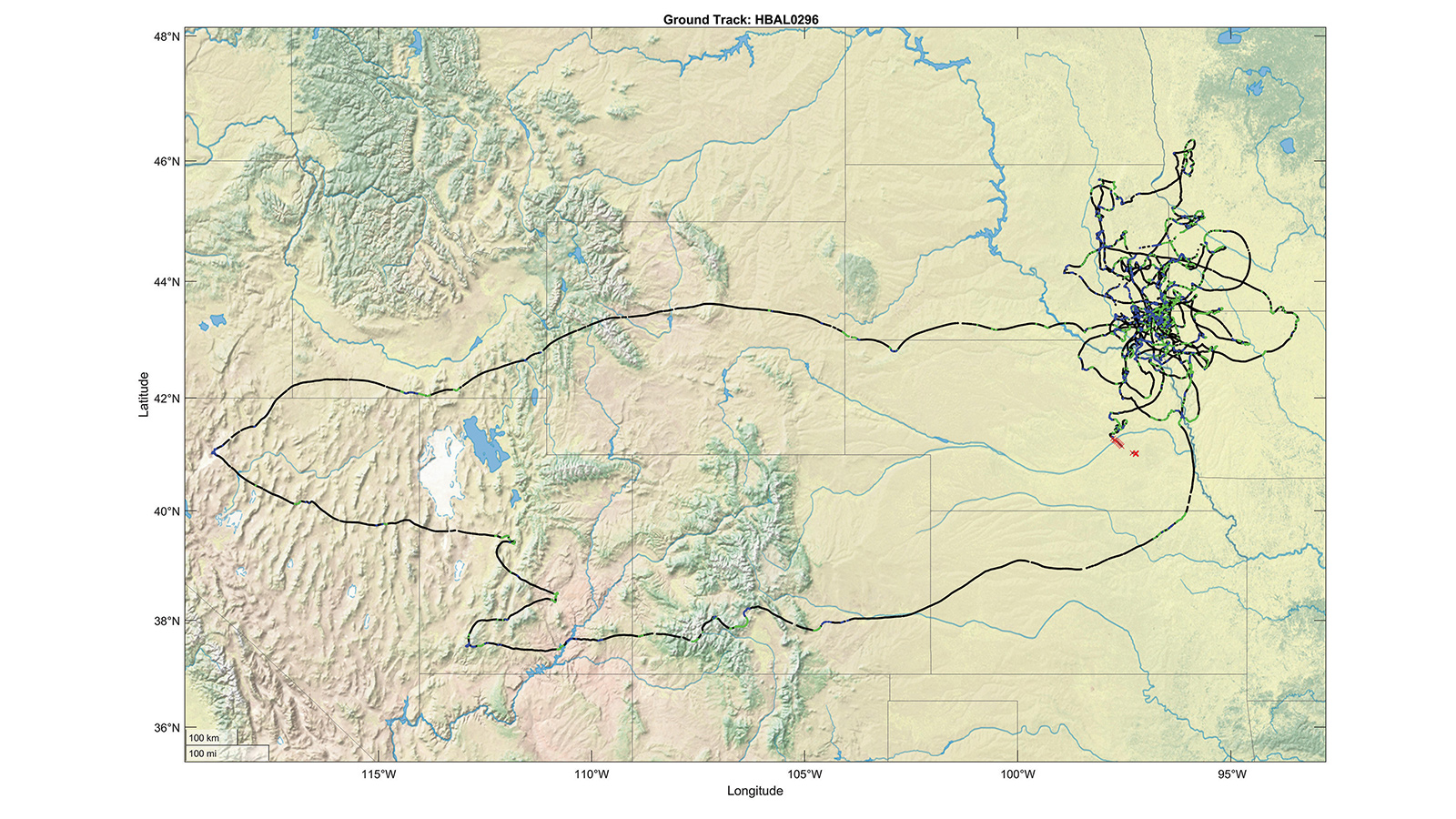Stay Up to Date
Submit your email address to receive the latest industry and Aerospace America news.
The Balloon Systems Technical Committee supports development and application of free-floating systems and technologies for buoyant flight in the stratosphere and atmospheres of other planets.
Raven Aerostar balloons logged 7,500 flight days in the stratosphere as part of scientific, military and commercial missions, with an average flight duration of over 140 days. In June and August, a Thunderhead 208 balloon demonstrated persistence in a designated area by keeping within 100 miles (160 kilometers) of Sioux Falls, South Dakota, for 28 days. After the balloon exited the area, Raven Aerostar brought it back with wind steering and again put it into persistent mode to stay in the area around Sioux Falls.
In June, the company demonstrated waypoint navigation with three balloons it launched from Maryland, flew across the country and brought down in a predesignated landing area in Northern California. After traveling 2,100 nautical miles, the balloons landed within 80 km of each other. In another demonstration of waypoint navigation and persistence, Raven Aerostar launched three balloons from the California coast in July and directed them over the Pacific Ocean for specific missions. One was directed to fly back to the Raven Flight Operations Center in Sioux Falls; another was sent to Hawaii, where it performed a fly-by and was then directed to Sioux Falls; the third system was sent to Hawaii, where it performed persistence maneuvers.
In February and June, Near Space Corp. completed the fourth and fifth flights in a series of balloon-based drop tests to qualify Boeing’s Starliner spacecraft parachutes for crewed flight, part of the effort to return spacecraft directly to U.S. soil. By dropping the Starliner from a high-altitude balloon, the spacecraft is tested with the correct shape, mass, airspeed and altitude, a feat that is difficult to achieve by other means. Early in 2019, Near Space Corp. began working with U.S. and international customers on several high-altitude projects and increased the capabilities of its High Altitude Shuttle System, which is a lifting-body-shaped drone that can carry projects to a high altitude for testing.
NASA’s Scientific Balloon Program continued work toward its goal of reliably launching 3,500-kilogram or heavier payloads to altitudes exceeding 35 km. In June and July, the program carried out six training balloon inflations in Palestine, Texas, to investigate prior anomalies. Inflations done under varying weather conditions, gross inflations and with balloons of different sizes stepped through all of the phases of the launch operations up to actual launch. Starting in late August, a Fort Sumner, New Mexico, flight campaign had its first six of 12 planned launches of the Balloon-Borne Cryogenic Telescope Testbed payload, or Bobcat. This is a new class of payload looking at the far-infrared emission lines to probe the chemical content, energetics and physical conditions within the interstellar medium of the Milky Way.
In August, CNES, the French space agency, led four scientific zero-pressure-balloon launches from the Timmins stratospheric base in Ontario, Canada, including flights with a pointing gondola carrying the French Pathfinder for an International Large Optical Telescope and the Canadian Super-pressure Balloon-borne Imaging Telescope. In May and August, the Swedish Space Corp. performed drop tests from balloons with dummy reentry bodies as part of the European Space Agency’s ExoMars mission that is scheduled to launch in 2020. A 113,000-meter³ balloon with an 800 kg payload and a 330,000 m³ balloon with a 2,000 kg payload carried out two drop tests at the Esrange Space Center.
Contributors: Russ Dewey, Mike Smith and André Vargas
Related Posts
Stay Up to Date
Submit your email address to receive the latest industry and Aerospace America news.




